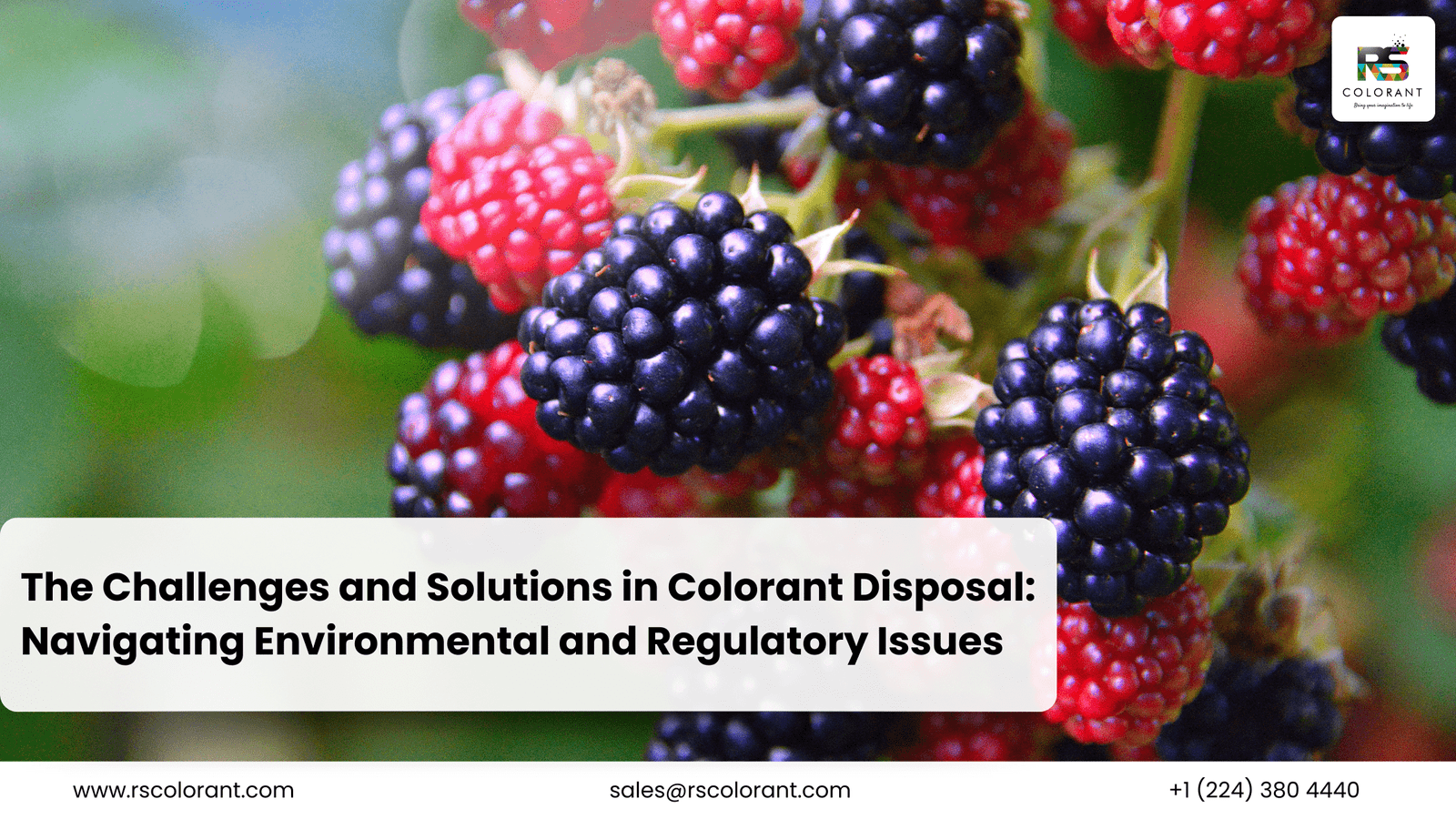Introduction
The Challenges and Solutions in Colorant Disposal is a critical topic as colorants are widely used across various industries, from food and beverages to textiles and cosmetics. Proper disposal of colorants is crucial to prevent environmental harm and ensure sustainable practices. In this article, we’ll explore the complexities of colorant disposal, identify the challenges faced, and present solutions to address these issues effectively.
Understanding Colorants
Types of Colorants
Colorants can be broadly classified into synthetic and natural categories.
Synthetic Colorants
Synthetic colorants are man-made chemicals used to achieve vibrant colors. They are commonly used in industries due to their stability and cost-effectiveness. However, they often pose significant environmental risks.
Natural Colorants
Natural colorants are derived from natural sources such as plants, minerals, and insects. They are generally considered safer for the environment but can be more expensive and less stable compared to their synthetic counterparts.
Applications in Various Industries
Colorants find applications in diverse sectors including:
- Food and Beverages: To enhance the visual appeal and differentiate products.
- Textiles: For dyeing fabrics and creating designs.
- Cosmetics: To add color to makeup and personal care products.
The Environmental Impact of Improper Colorant Disposal
Improper disposal of colorants can lead to severe environmental consequences.
Soil Contamination
Chemical colorants can leach into the soil, affecting plant growth and potentially entering the food chain.
Water Pollution
When colorants are improperly disposed of, they can contaminate water sources, harming aquatic life and affecting water quality.
Impact on Wildlife
Toxic colorants can disrupt ecosystems, affecting wildlife health and biodiversity.
Challenges in Colorant Disposal
Regulatory Challenges
Navigating the complex web of regulations for colorant disposal can be daunting. Different regions have varying standards, and keeping up with these can be challenging for businesses.
Technological Limitations
Current disposal technologies may not effectively handle all types of colorants, particularly those that are highly toxic or persistent.
Cost Issues
The cost of proper disposal can be high, especially for smaller companies. Balancing cost with compliance is a significant challenge.
Public Awareness and Education
Lack of public awareness about the importance of proper disposal can lead to improper practices and increased environmental risk.
Regulatory Framework for Colorant Disposal
Overview of Regulations
Regulations governing colorant disposal vary by country and region. They typically focus on limiting the environmental impact and ensuring safe handling.
Compliance Requirements
Businesses must adhere to specific guidelines regarding the treatment, storage, and disposal of colorants. Non-compliance can result in penalties and legal issues.
Challenges in Enforcement
Enforcing regulations can be difficult due to the complexity of the disposal processes and the need for regular monitoring.
Technological Solutions for Colorant Disposal
Advanced Treatment Technologies
Chemical Treatment
Chemical treatment methods involve breaking down colorants into less harmful substances. These methods can be effective but may generate secondary waste.
Biological Treatment
Biological treatment utilizes microorganisms to degrade colorants. This approach is often more sustainable but may require longer processing times.
Innovations in Colorant Recycling
Recycling colorants can help reduce waste and recover valuable resources. Innovations in this area are continually evolving to improve efficiency and effectiveness.
Cost Considerations in Colorant Disposal
Cost of Disposal vs. Cost of Non-Compliance
While proper disposal can be costly, the expenses associated with non-compliance, such as fines and environmental damage, can be far greater.
Financial Incentives for Proper Disposal
Some governments and organizations offer incentives for adopting environmentally friendly disposal practices. These can help offset the costs and encourage compliance.
Case Studies of Cost-Effective Solutions
Examining case studies where companies have successfully implemented cost-effective disposal solutions can provide valuable insights and strategies.
Public Awareness and Education
Importance of Public Engagement
Educating the public about the environmental impact of improper colorant disposal is crucial for promoting responsible practices.
Educational Campaigns and Initiatives
Campaigns and initiatives can raise awareness and provide guidance on proper disposal methods. Collaboration between industry and government can amplify these efforts.
Role of Industry and Government
Both industry and government play critical roles in driving change and ensuring that colorant disposal practices are sustainable and effective.
Best Practices for Colorant Disposal
Safe Handling and Storage
Proper handling and storage of colorants can prevent accidental spills and reduce environmental risk.
Proper Disposal Methods
Adopting best practices for disposal, such as using licensed disposal facilities and following regulatory guidelines, is essential for minimizing impact.
Case Studies of Successful Practices
Reviewing successful practices from leading companies can offer practical examples and inspire others to improve their disposal methods.
Future Trends in Colorant Disposal
Emerging Technologies
New technologies are continually being developed to improve colorant disposal and recycling. Staying informed about these trends can help businesses adopt the latest solutions.
Policy Changes
Changes in regulations and policies can impact disposal practices. Keeping up with these changes is important for ensuring compliance and adapting practices as needed.
Industry Innovations
Innovations within the industry, such as more efficient treatment methods and sustainable colorant alternatives, can drive improvements in disposal practices.
Conclusion
The challenges in colorant disposal are significant but not insurmountable. By understanding the issues and implementing effective solutions, businesses can minimize their environmental impact and ensure compliance with regulations. Embracing technological advancements, educating the public, and adopting best practices are key steps in achieving sustainable colorant disposal.
FAQs
What are the most common colorants used in industries?
Common colorants include synthetic dyes such as FD&C colors, and natural dyes derived from plants and insects. Their applications span across food, textiles, and cosmetics.
How can companies ensure compliance with disposal regulations?
Companies can ensure compliance by staying informed about relevant regulations, investing in proper disposal technologies, and working with licensed disposal facilities.
What are the environmental risks associated with improper colorant disposal?
Improper disposal can lead to soil and water contamination, harming ecosystems and wildlife, and affecting human health through contaminated resources.
Are there any cost-effective methods for colorant disposal?
Yes, methods such as recycling, adopting advanced treatment technologies, and taking advantage of financial incentives can make colorant disposal more cost-effective.
What role does public awareness play in improving disposal practices?
Public awareness can drive responsible disposal behaviors and support for environmental initiatives, leading to better overall disposal practices and reduced environmental impact.




